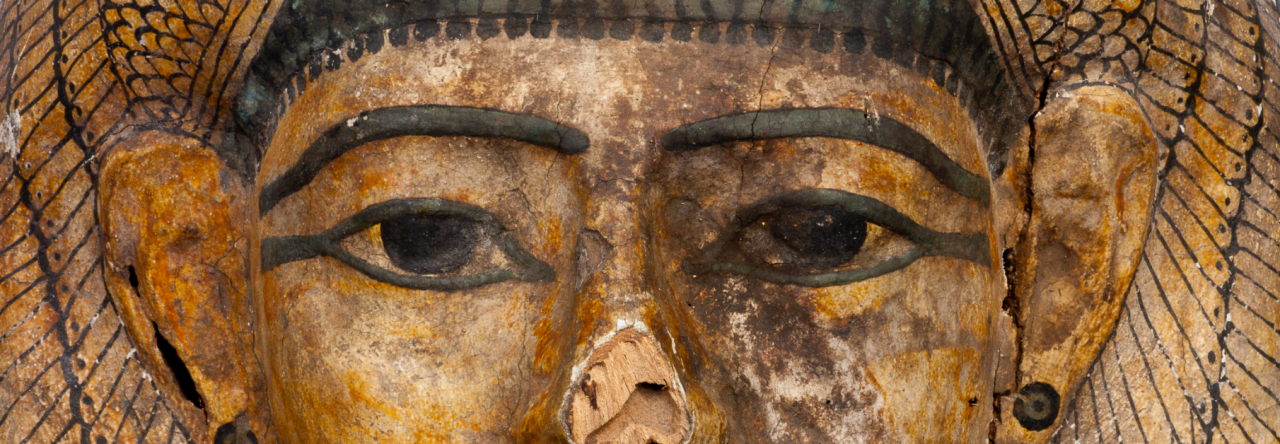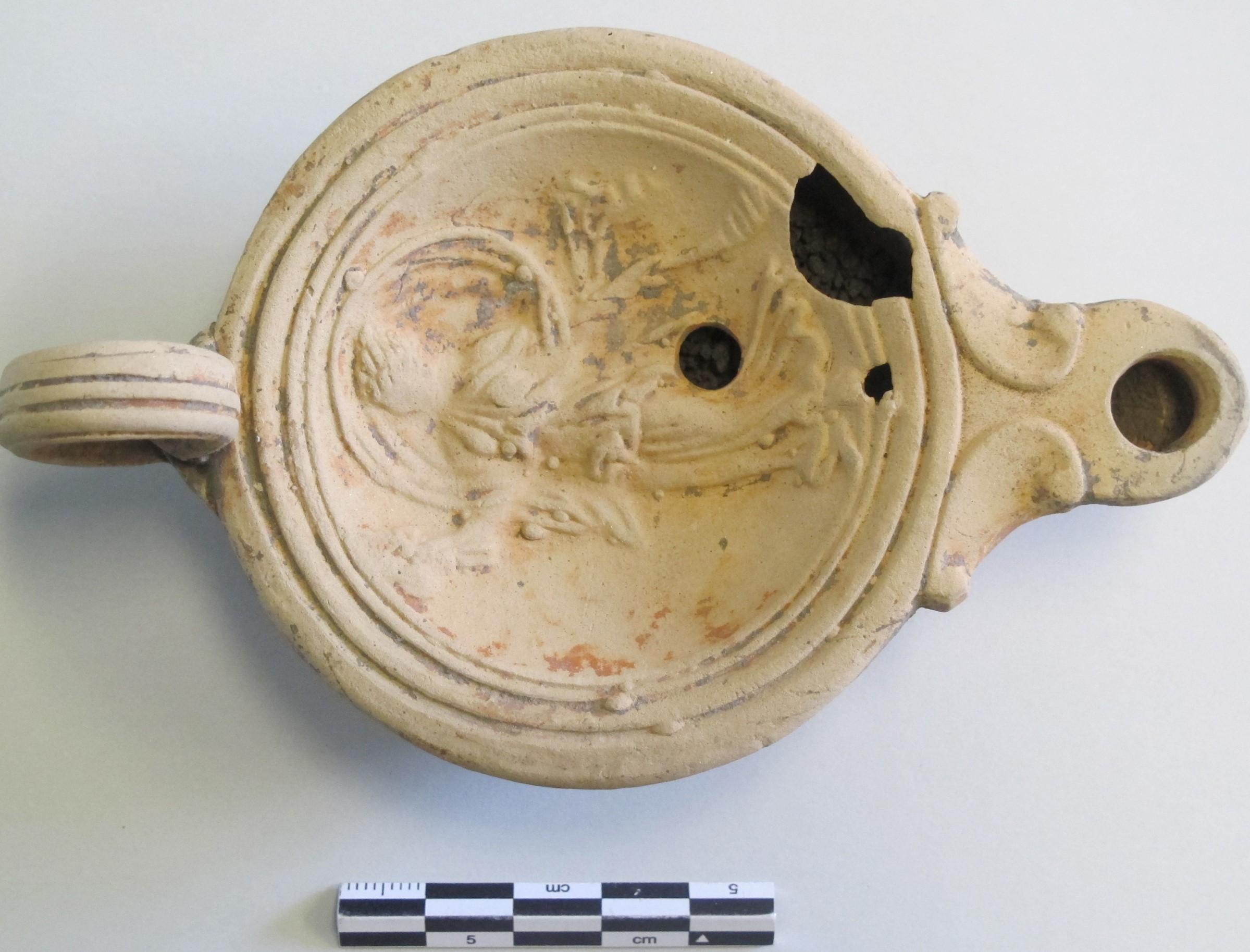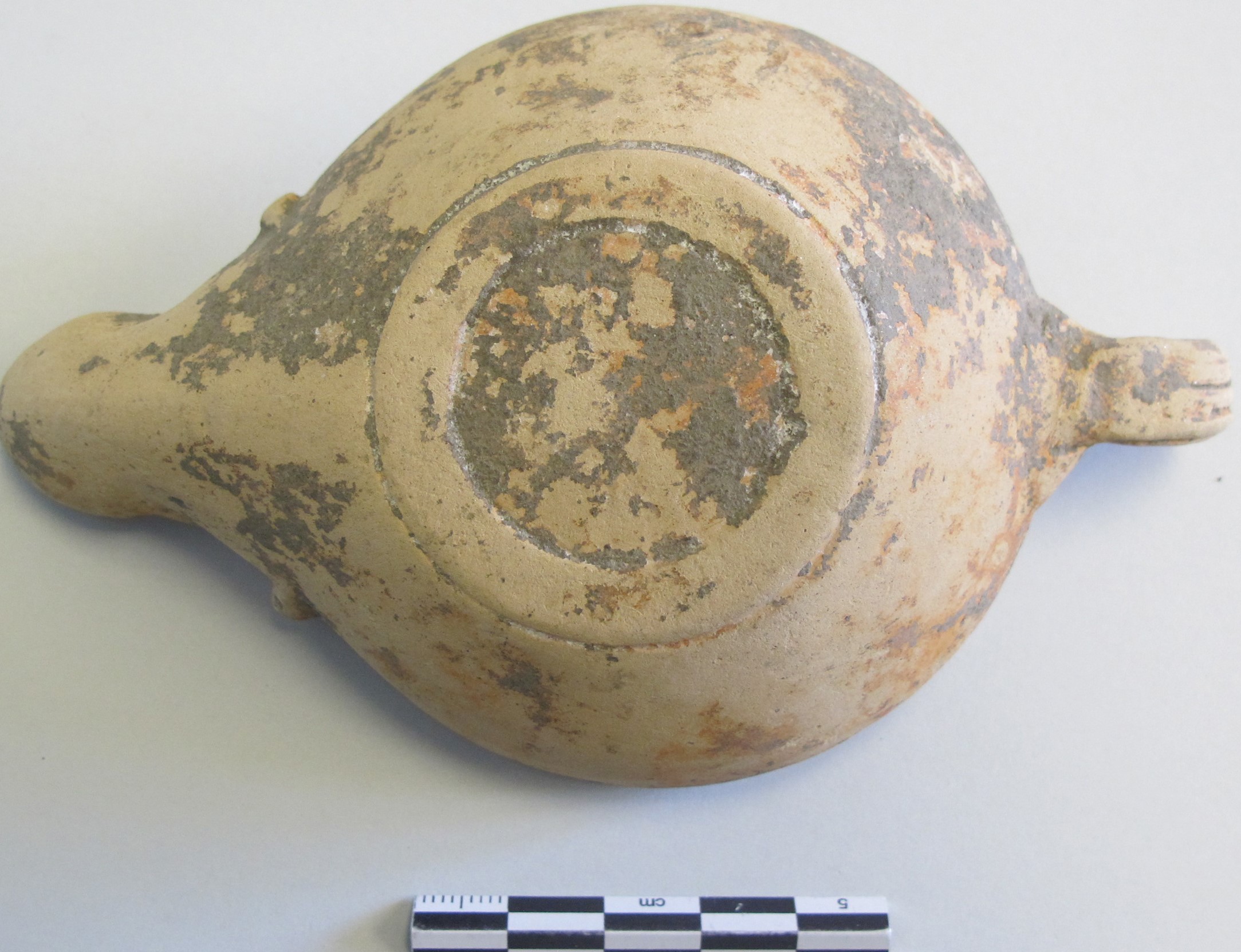For a 3D model made by the Virtual Curation Lab at Virginia Commonwealth University, see https://skfb.ly/orASz
AWG1980.01.01
Roman, Roman period (1st century BCE - 1st century CE)
Material: Terracotta
Technique: Mold-made
Weight: 62g
Dimensions: 13cm long, 3cm tall, 8cm wide
Condition: Fair condition, glaze/slip has worn off considerably, small chip in the relief, filled with black dirt
Provenance: Said to be from Pompeii
Source/donor: Donated from the estate of May Keller
Date of acquisition: 1980
Research by: Julia Berutti ’23, Amy Nicholas ’11
Detailed description of form/shape:
Mold-made from a buff-colored clay, traces of reddish glaze or slip; shallow, closed, body with a small, off-center hole; and a relief of a dancing woman in the center, framed by four rings, small chip in the relief. The nozzle protrudes from the body, flanked by volutes at the base and reaches out to form a round top pierced with a hole; circular loop handle decorated with three bands at the top.
Detailed description of decoration:
The dancing woman in the middle wears a long, flowing garment that swooshes around her head and flows around the circular frame. Her left hand is held down, holding an oblong object (sash or lowered torch?). Her right hand is raised and holds what could be a bundle of plants (grain or poppies?) or a folded sash.
Comparanda:
This lamp appears to be a Loeschcke V type, classified by Siegfried Loeschcke through study of Roman lamps from the legionary fort in Vindonissa. For similar shape and mythical relief, compare British Museum 1868,0110.649, 1856,1226.399, and 1847,1108.1. For other examples of maenad figures in Roman art, refer to the J. Paul Getty Museum Collection 83.AG.222.3.1, 83.AG.222.4.2, 85.AN.370.67, and British Museum Q1525 PBR (Bailey 1983, 5, fig. 5, pl. 3). For an example of a lamp with a maenad relief, compare Getty 83.AQ.377.403. For a goddess depicted with a similar framing billow of drapery, see the figure identified as Ceres/Tellus on the Ara Pacis Augustae.
Discussion:
From the estate of May Keller, this volute-nozzle lamp is said to be from Pompeii and is most likely from around the first century BCE to the first century CE. The figure is probably some type of mythical figure, a common theme for ancient lamps, but it is uncertain who she is exactly. Initially, it was suggested that she could be some type of maenad, a female follower of Dionysus. However, based on comparanda, specifically British Museum Q1525 PBR, the figure is more likely a goddess, specifically Ceres, Proserpina, or Luna (Bailey 1983, 160). Each of these goddesses have specific elements that often appear in their depictions. For instance, Ceres is often depicted with poppy imagery, a torch, and a veil and crown (Spaeth 1994, 68-72). While it is possible that the figure holds poppies in her right hand and a torch in her left, the details are so indistinct that it is impossible to say for sure. This kind of lamp was made using a mold. Mold-forming of lamps involved stretching large sheets of clay, cutting them down to the correct size for the mold, then pressing the clay into the mold. This process could only take place under certain light and space conditions, meaning that specific rooms were often dedicated to the process of mold-forming (Peña and McCallum 2009, 71). Recent excavations for Pompeii have revealed an excess of new information about Roman pottery, and there is evidence that the Via di Nocera pottery production facility was manufacturing mold-made lamps like this one (Peña and McCallum 2009, 57, 78).
Bibliography:
Bailey, Donald. 1983. Catalogue of Lamps in British Museum III Roman Provincial Lamps. London: British Museum Publications Ltd..
McNally, Sheila. 1978. “The Maenad in Early Greek Art.” Arethusa 11, no. 1/2: 101–35.
Peña, J. Theodore, and Myles McCallum. 2009. “The Production and Distribution of Pottery at Pompeii: A Review of the Evidence; Part 1, Production.” American Journal of Archaeology 113, no. 1: 57–79.
Spaeth, Barbette Stanley. 1994. “The Goddess Ceres in the Ara Pacis Augustae and the Carthage Relief.” American Journal of Archaeology 98, no. 1: 65–100. https://doi.org/10.2307/506222.



